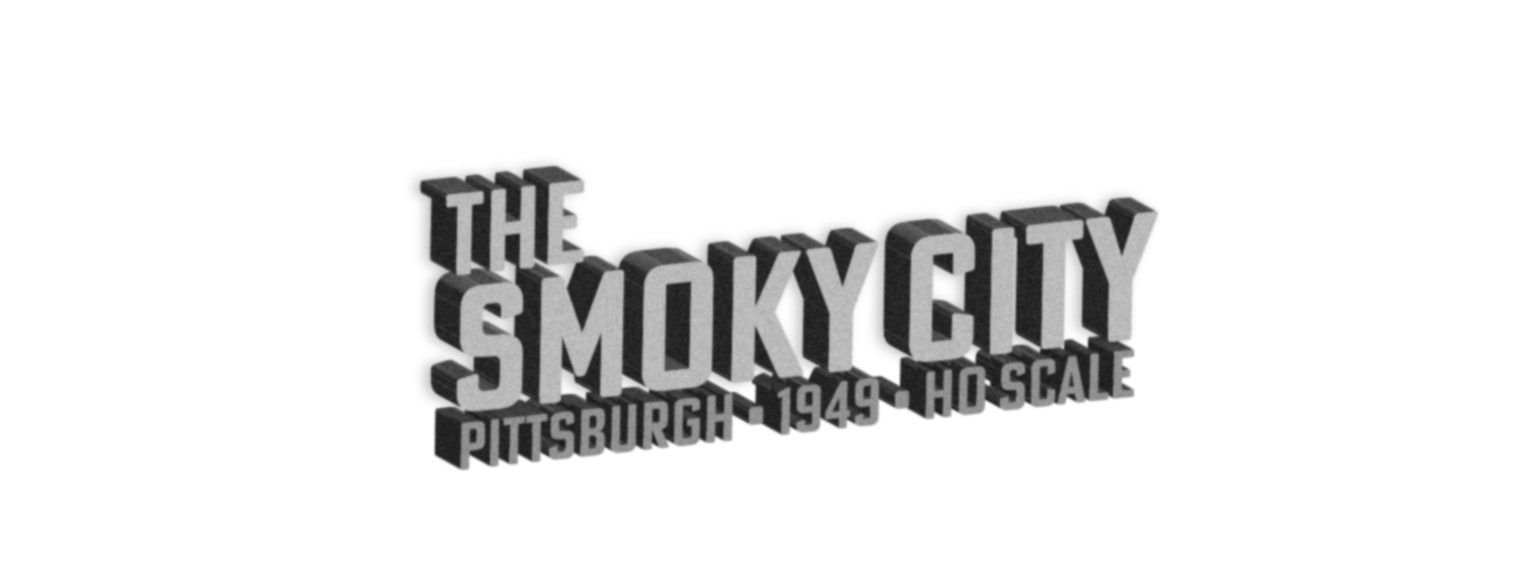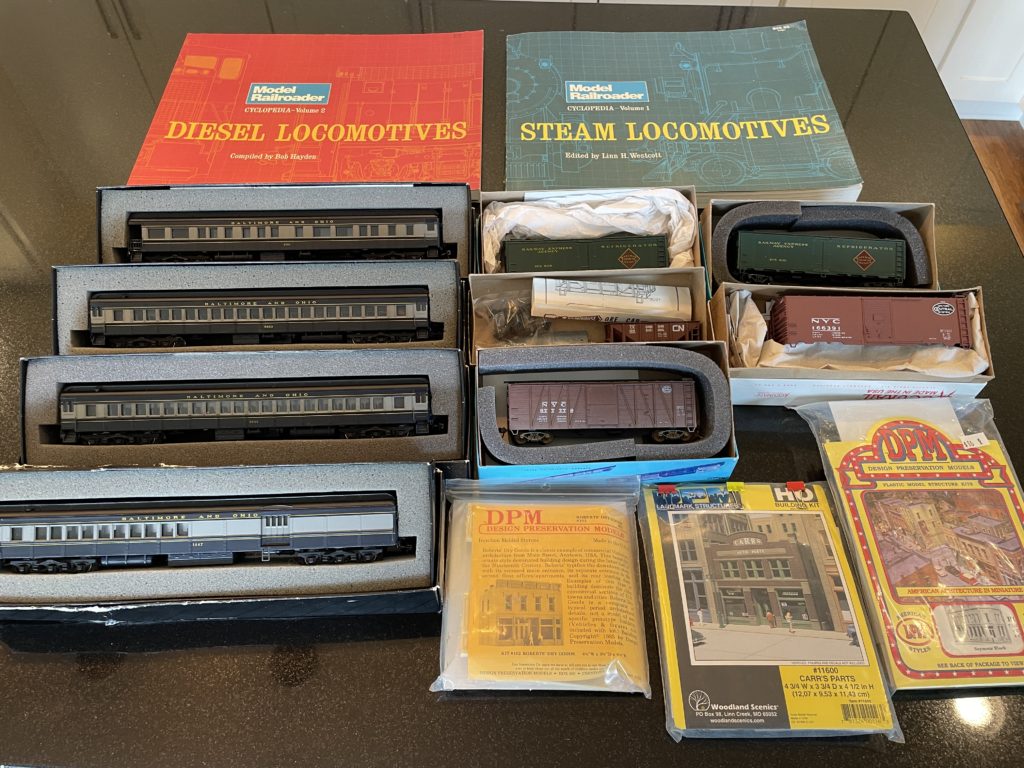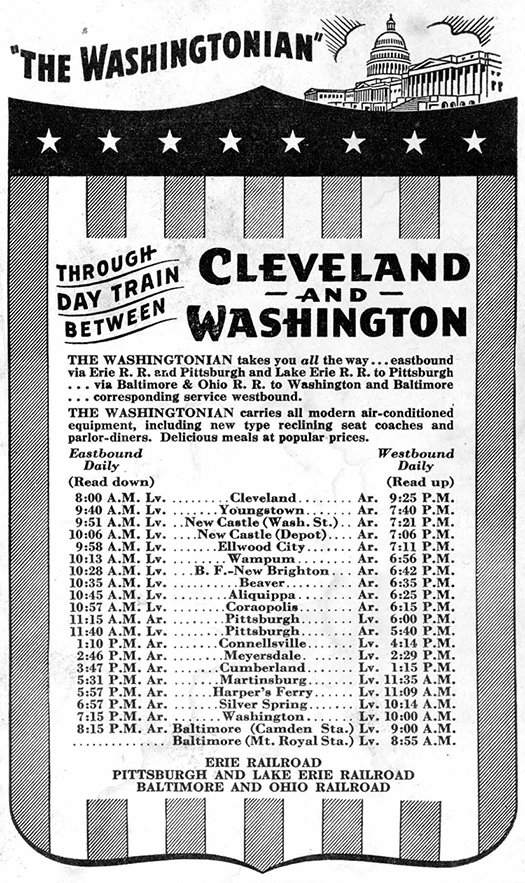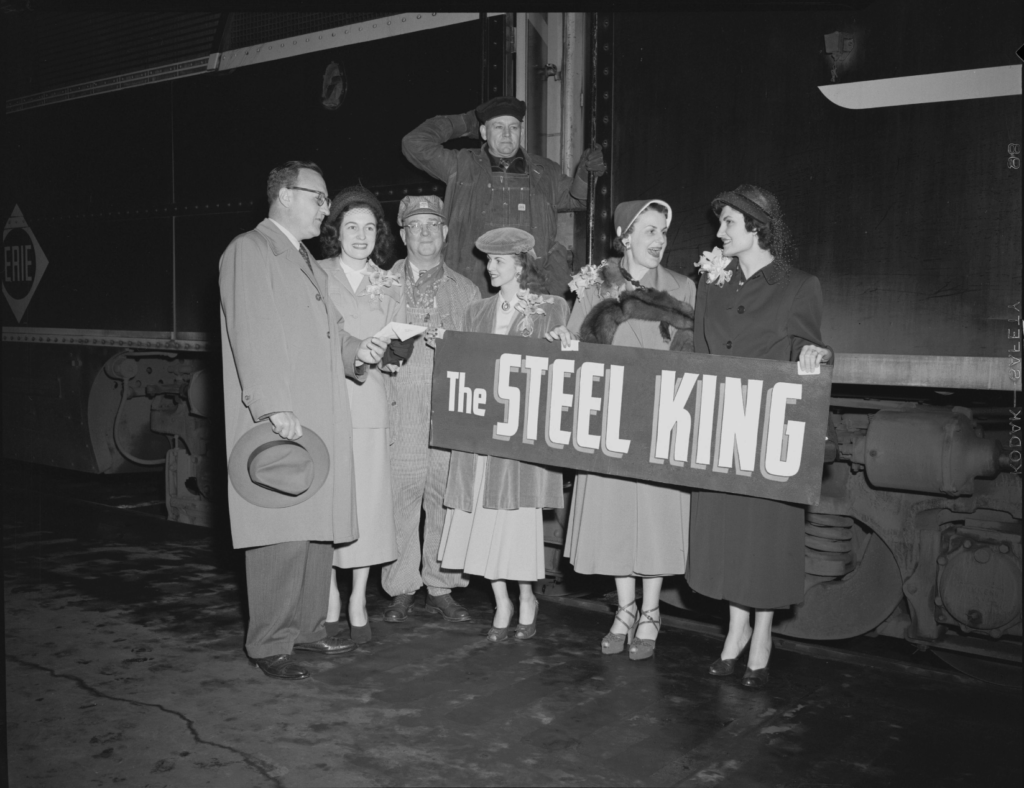A year ago, I was souring on Athearn heavyweight passenger cars, and I put the brakes on acquiring and/or detailing more of them. This year, I bought my first four Walthers heavyweights (a coach and three sleepers), and soon decided to completely abandon the Athearn heavyweights, in favor of Walthers. They have a good level of detail and none of the problems of the Athearn cars. I bought two more sleepers in April.
After reviewing the B&O’s 1949 passenger train consists again, I updated my list of cars needed for the eight trains I’m modeling, using Walthers cars instead of Athearn. I also created a wish list on Trainz.com and saved searches on eBay for the cars I need. In total, there are 46 cars needed (I have 7 of them so far), including heavyweight and streamlined lightweight, but not including the elusive streamlined heavyweights of the Capitol Limited.
The Walthers cars don’t come from the factory with interior lights, but they make LED lighting kits for them. I don’t think I want to use those, because there’s no way to turn them off while they’re on powered track, and I don’t think there’s a capacitor built in, so they’d …





